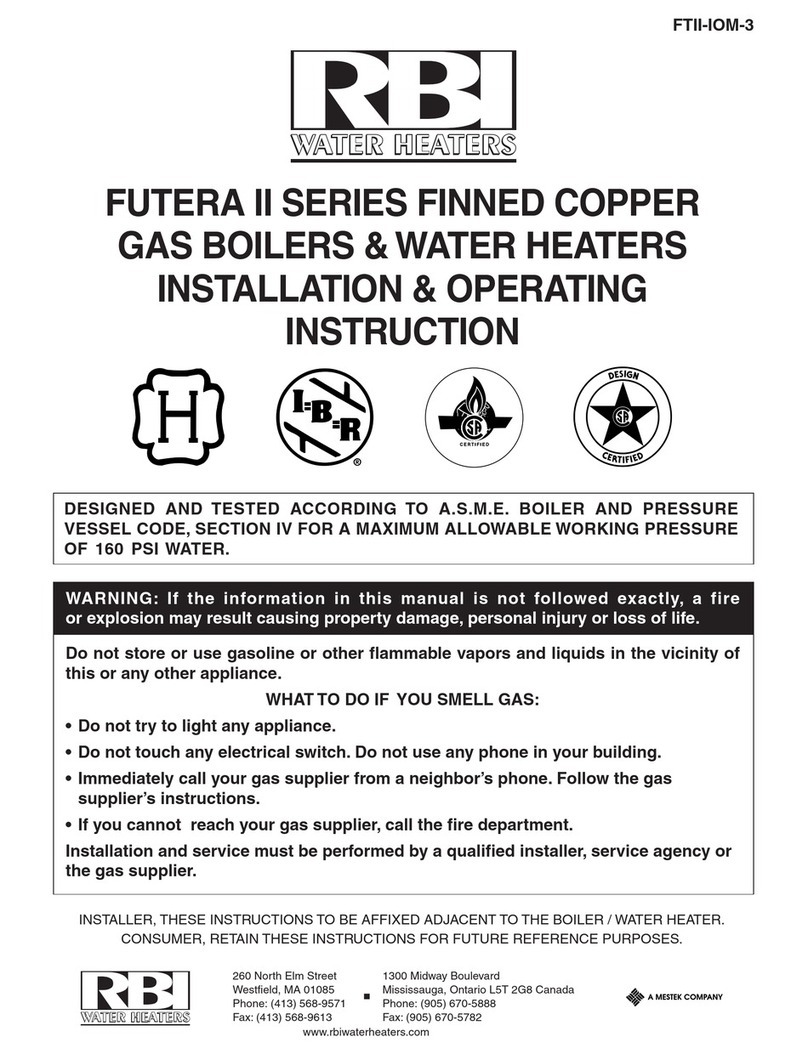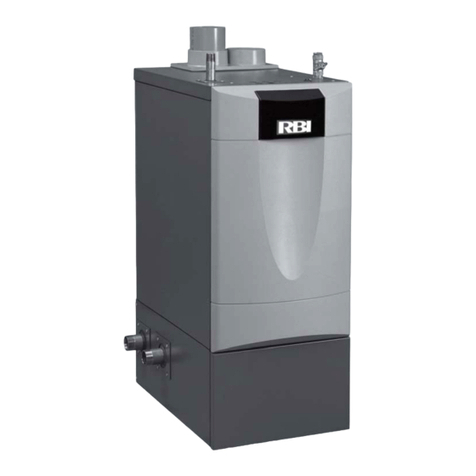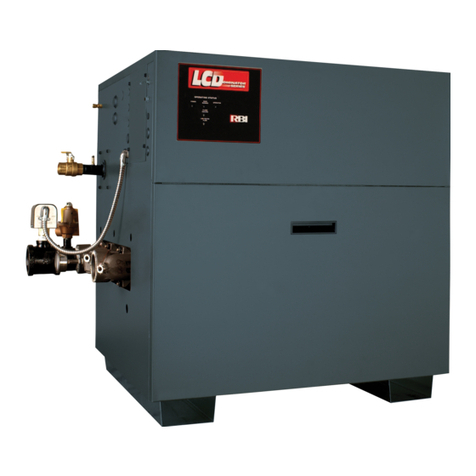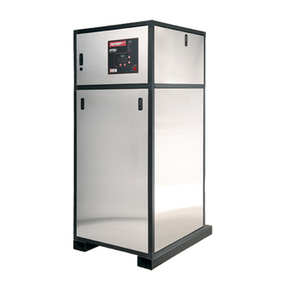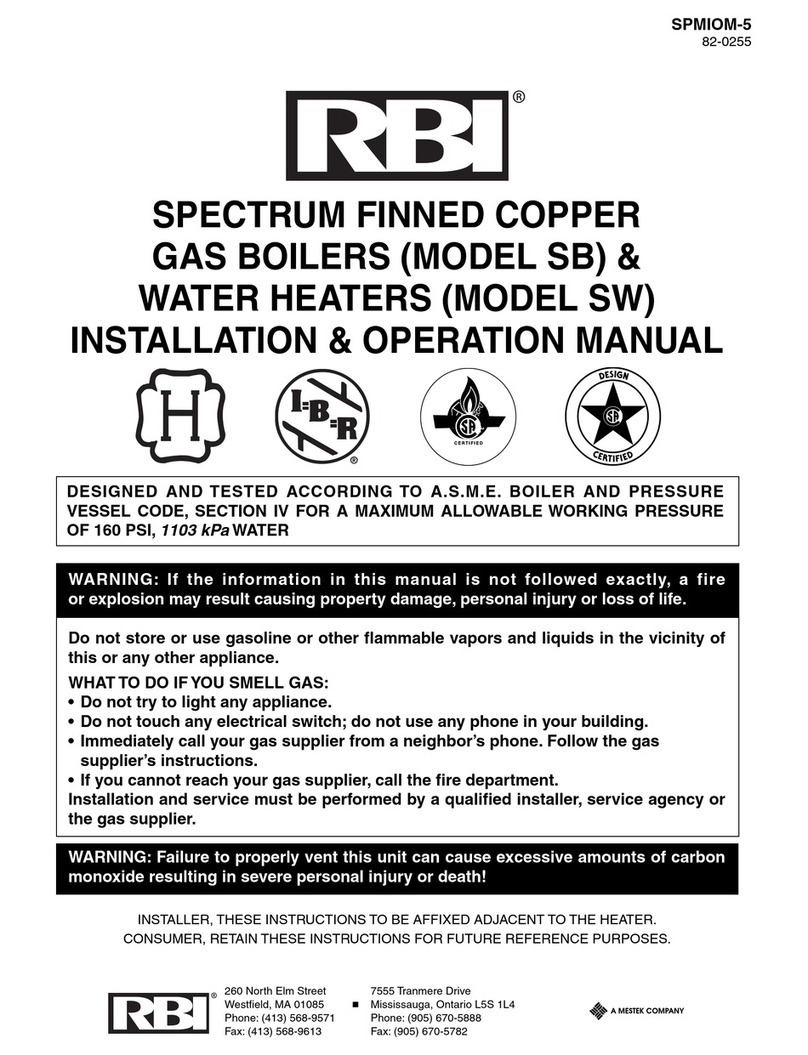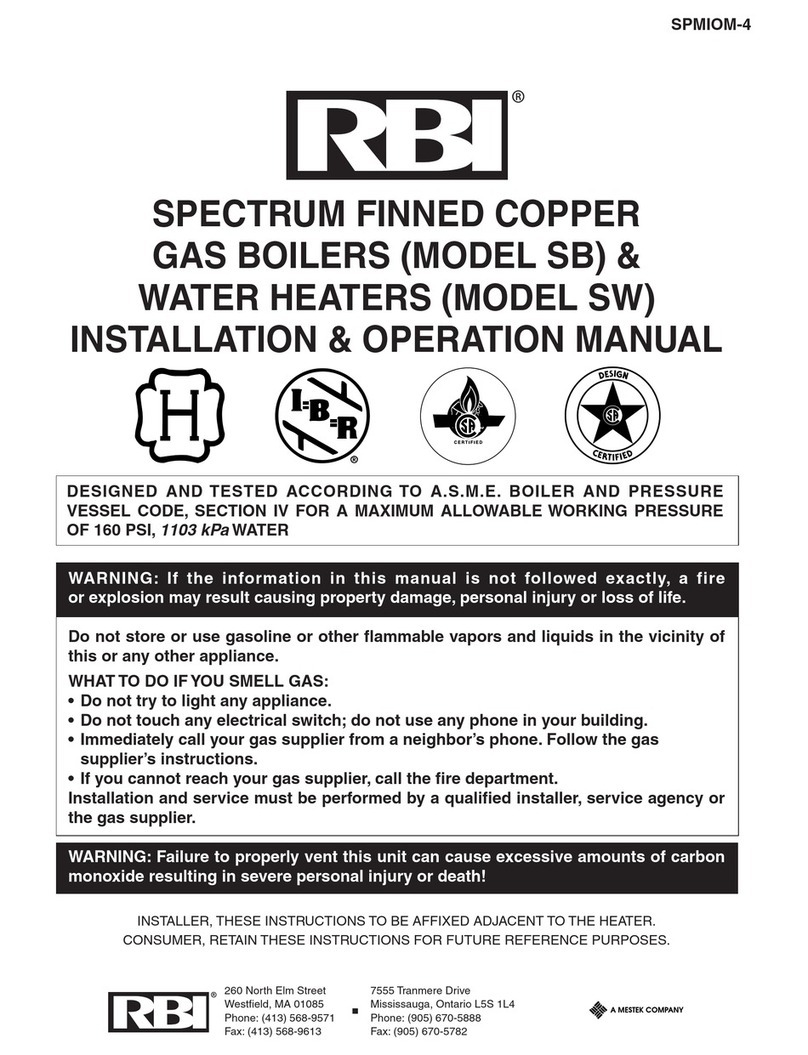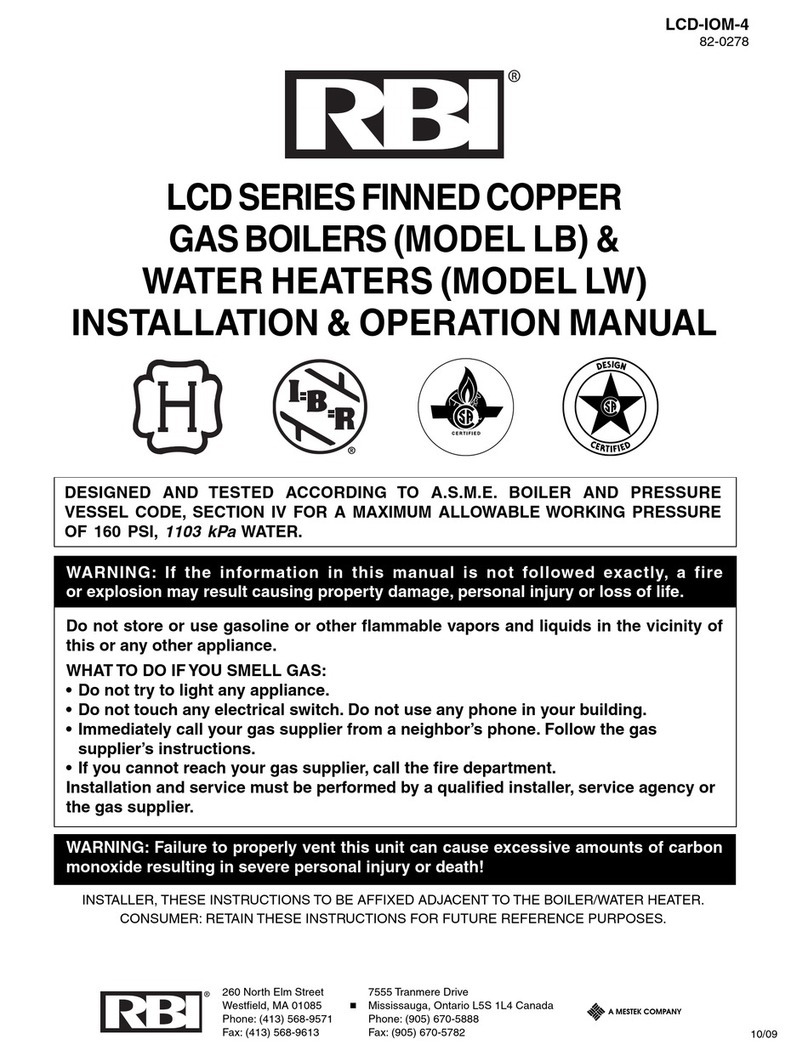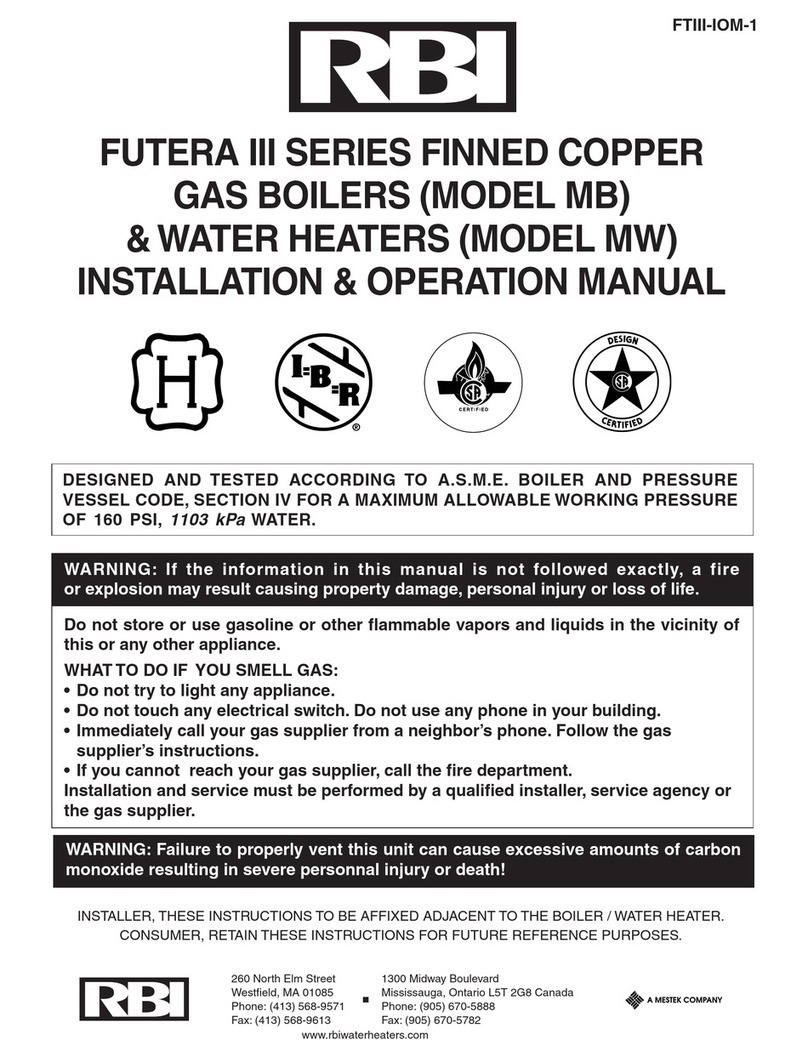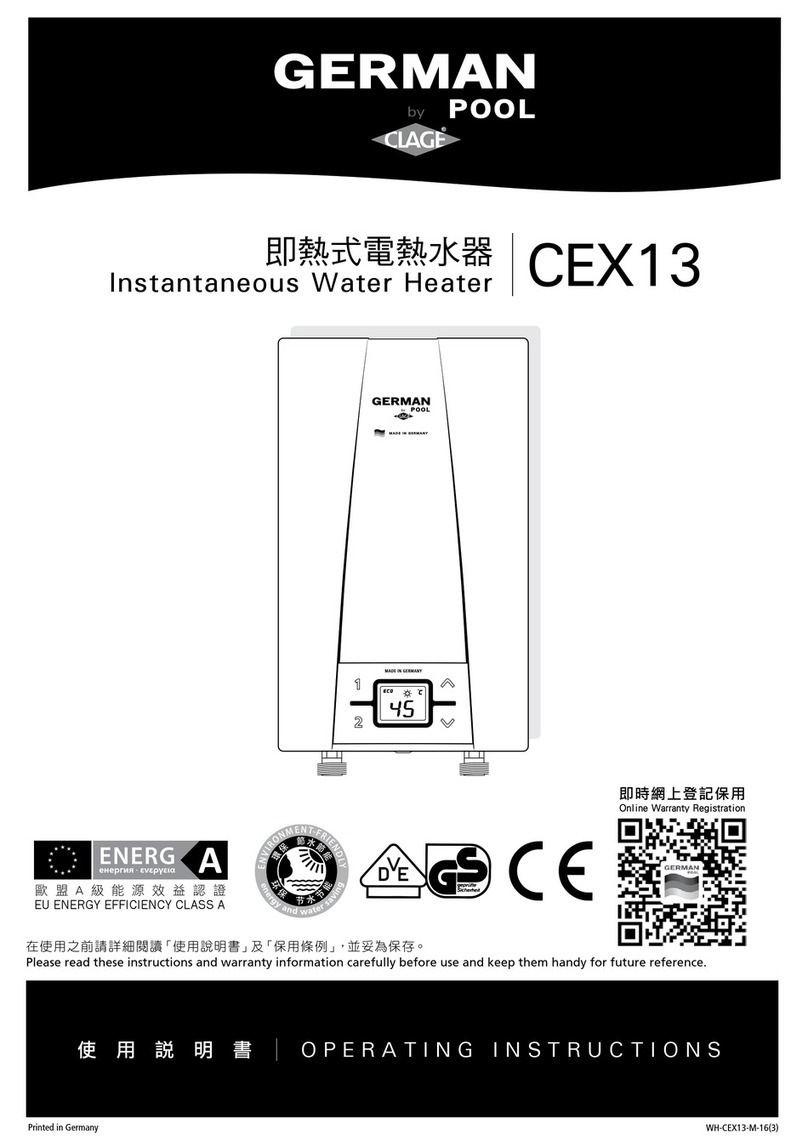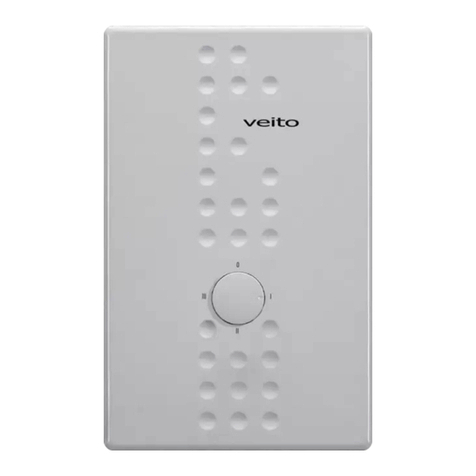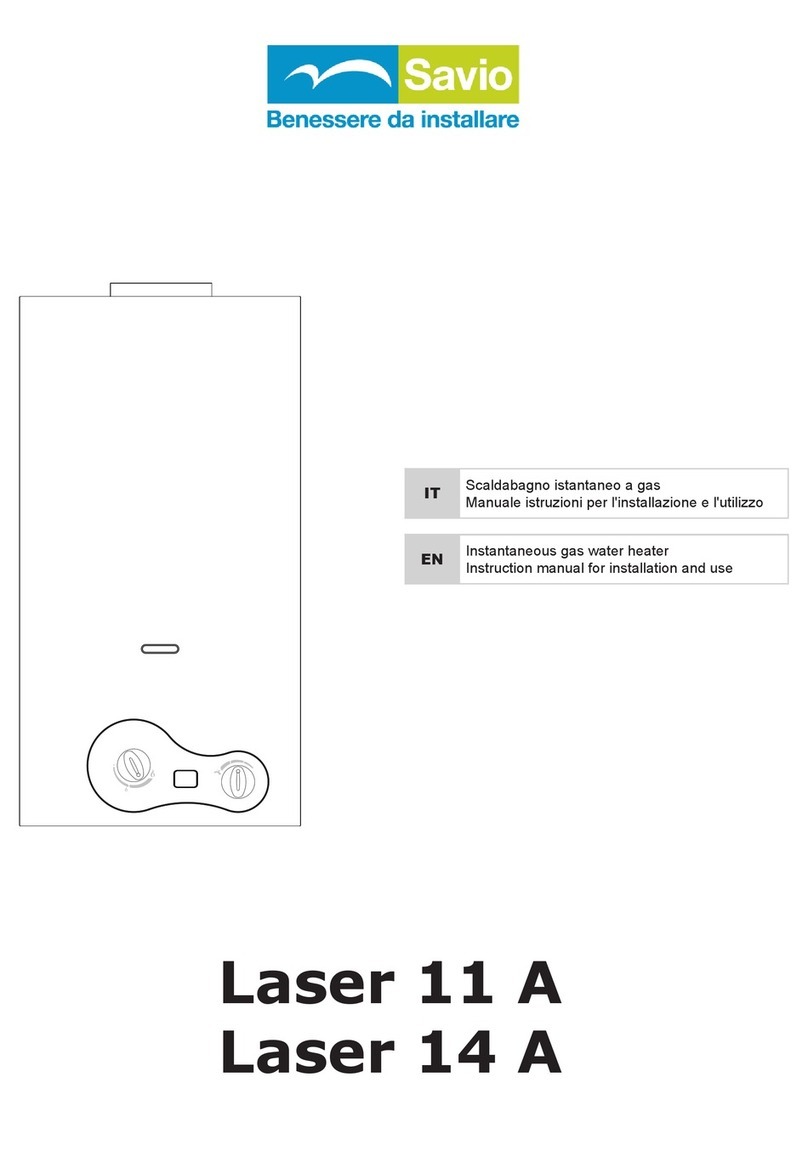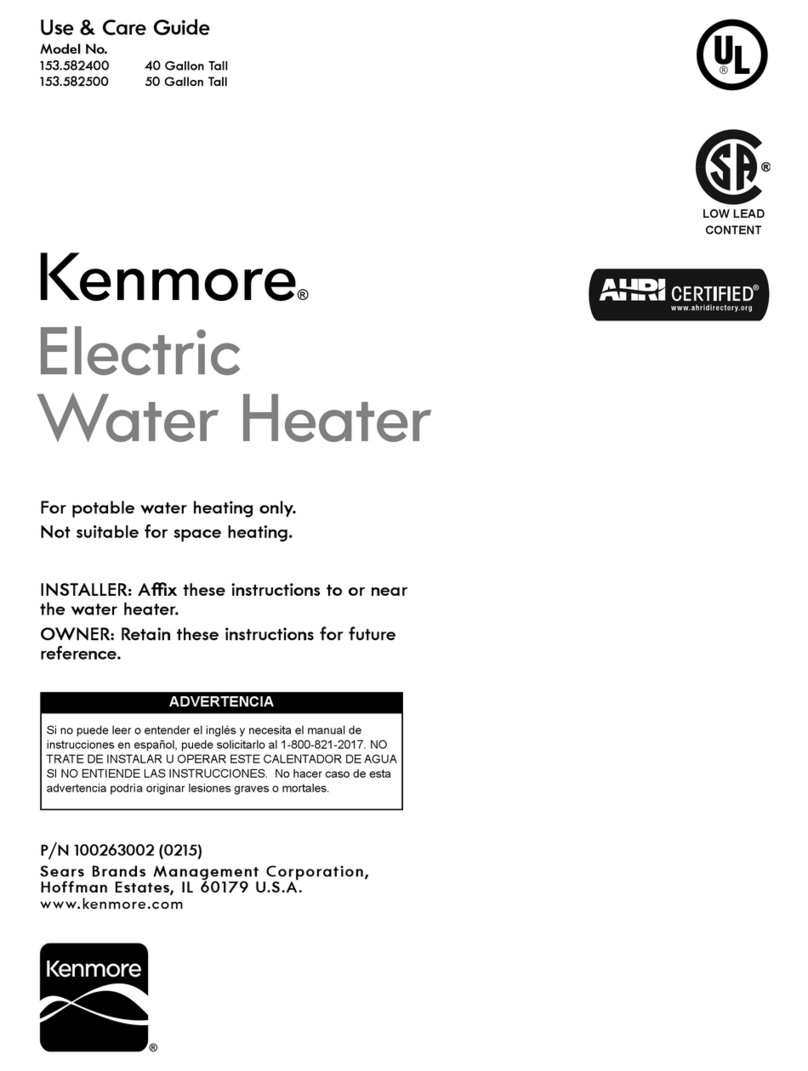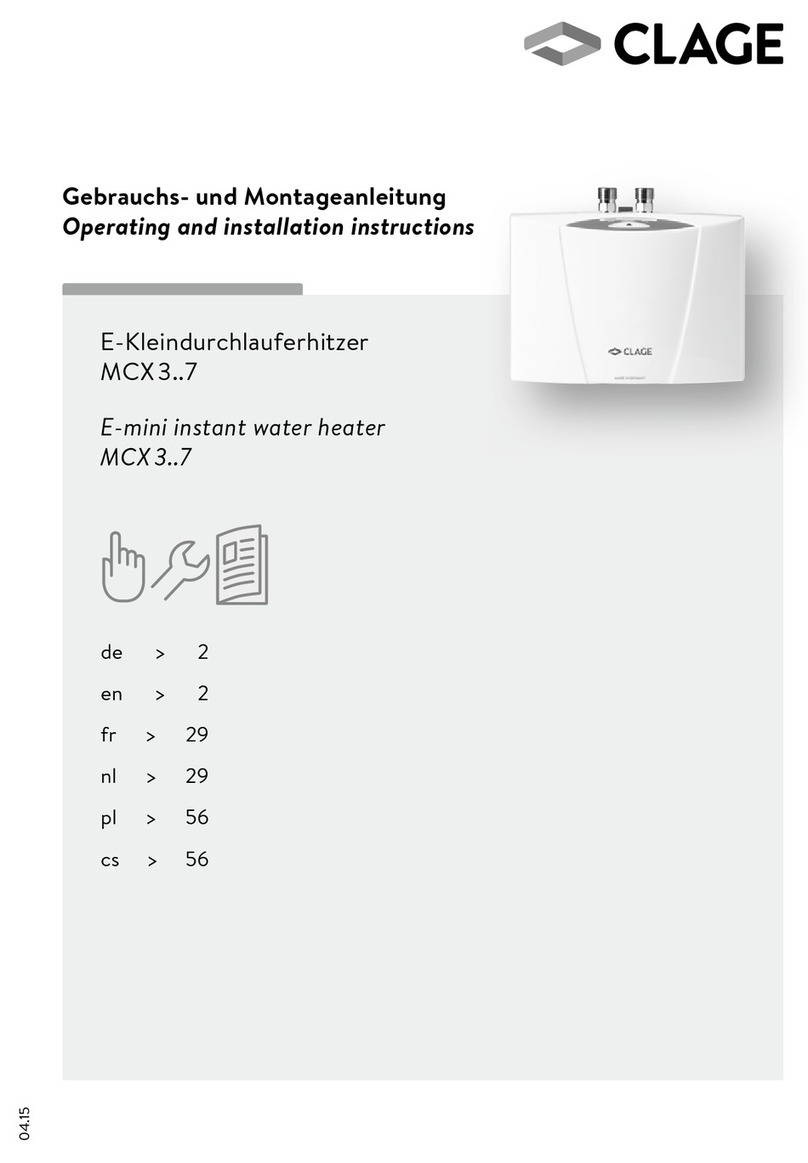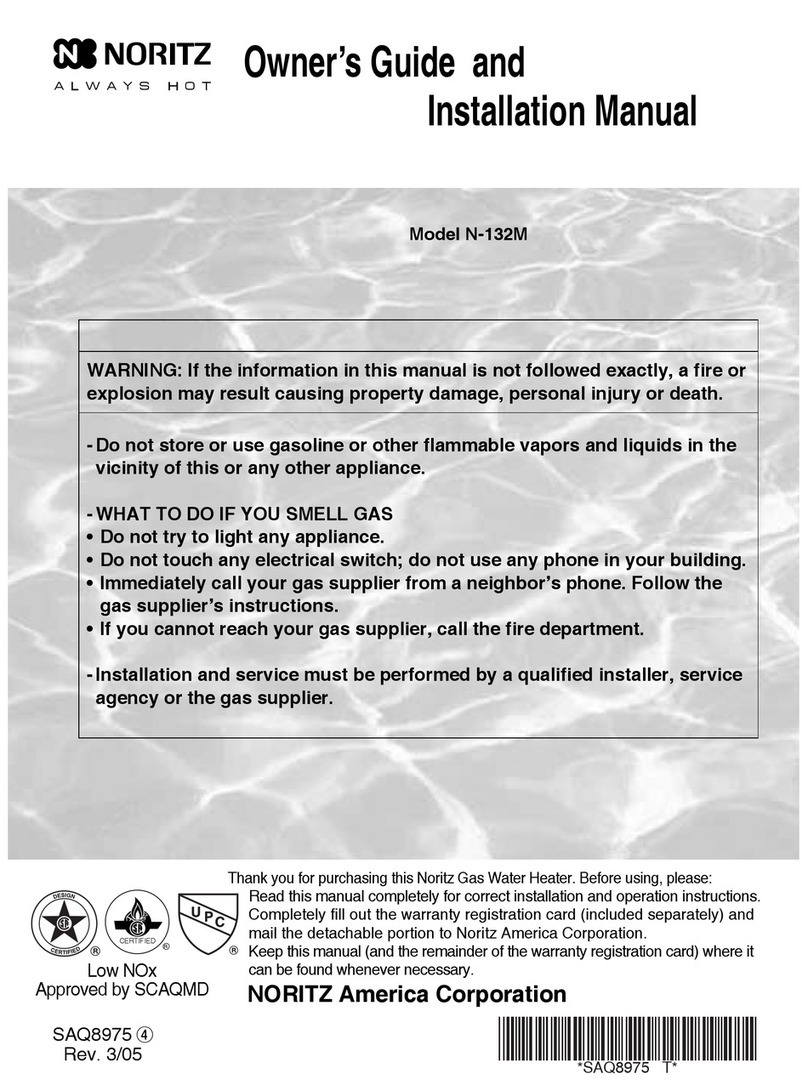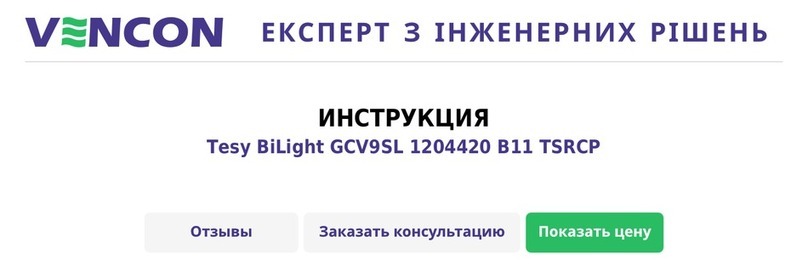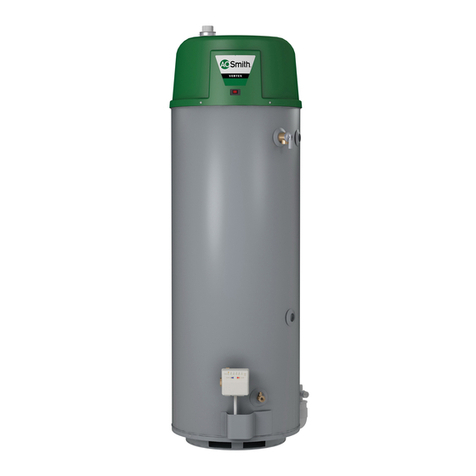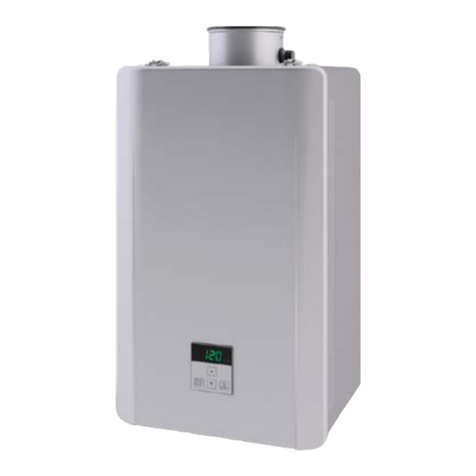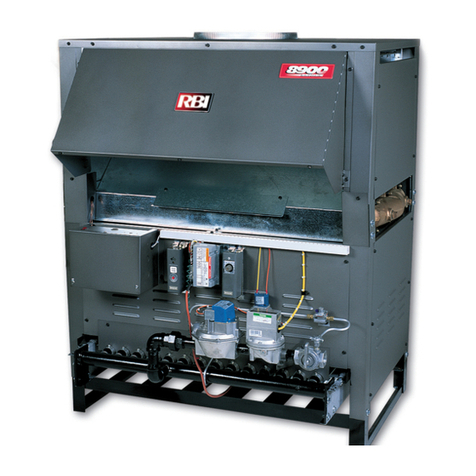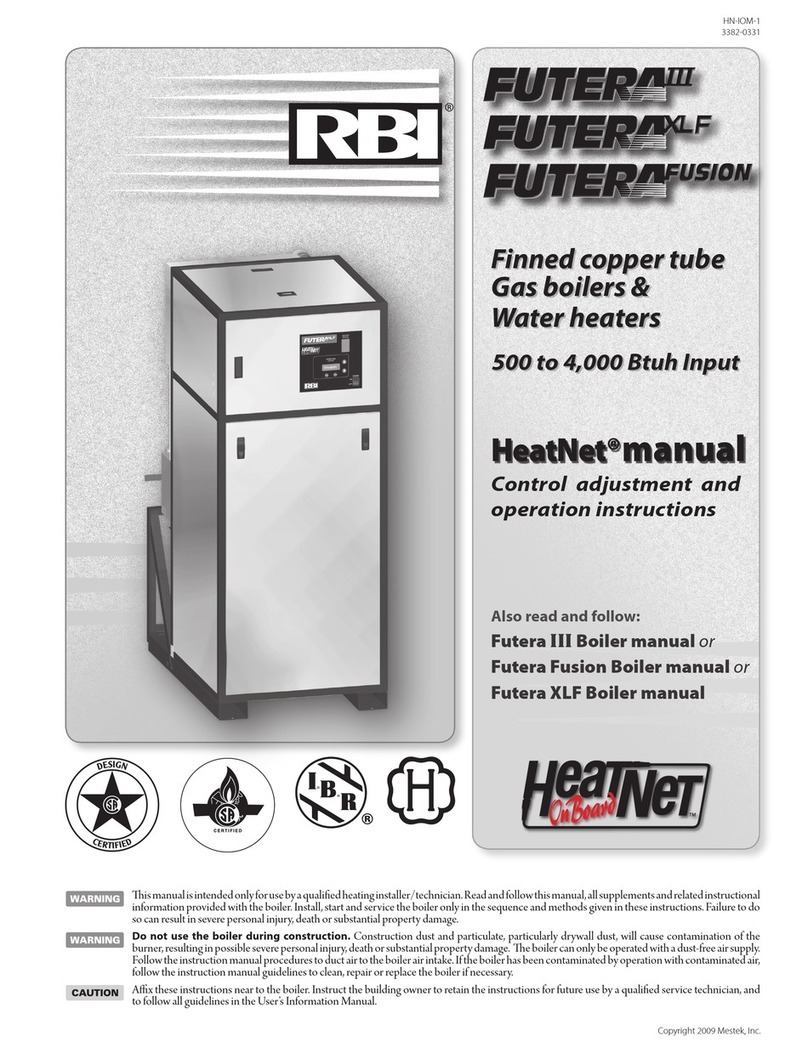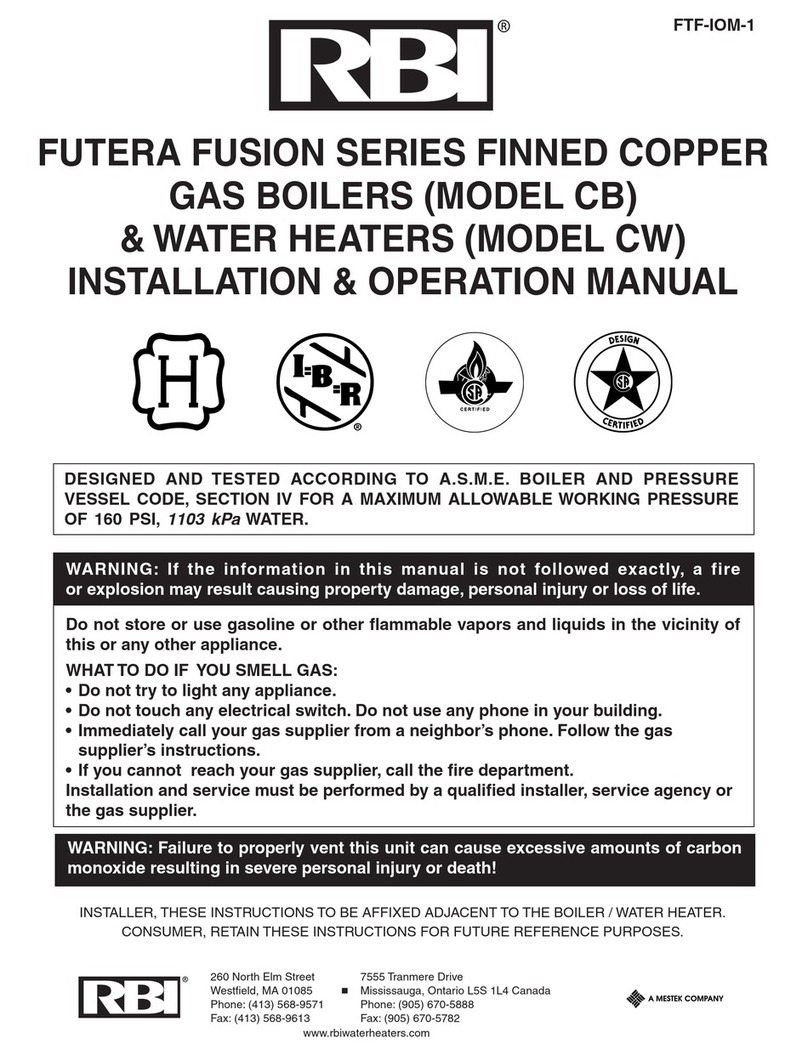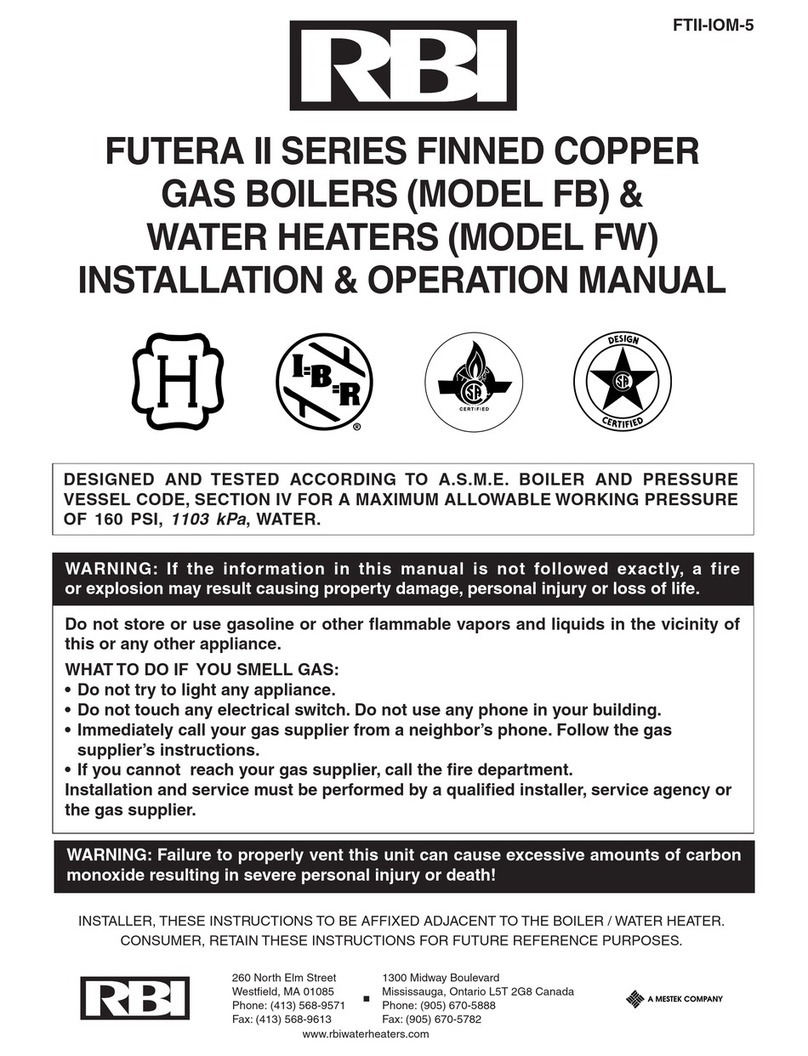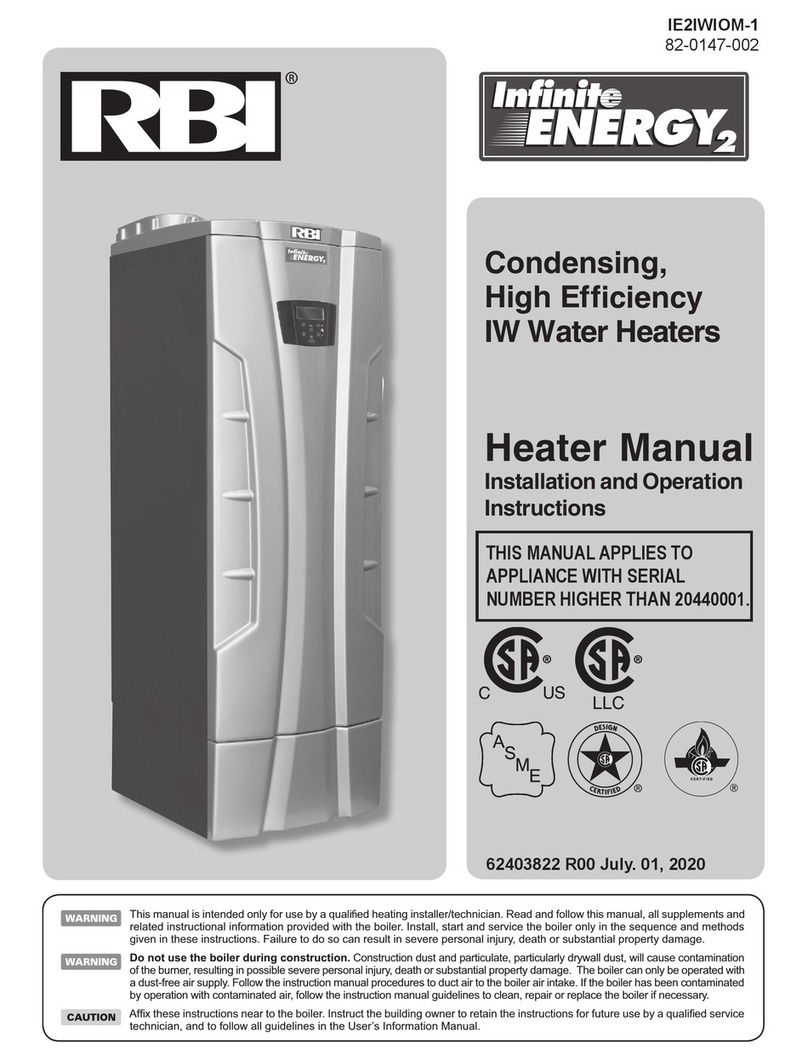
4
FUTERA II INSTALLATION AND OPERATION INSTRUCTIONS
WARNING: Never operate the Futera II in an
environment subjected to a negative pressure
unless it is Direct Vented. Failure to comply with
this warning can result in excessive levels of
carbon monoxide causing severe personal injury
or death!
All Air From InsideThe Building
If the Futera II is to be located in a confined space, the
minimum clearances listed in Table 1 must be maintained
between it and any combustible construction. When
installed in a confined space without the intake air
option, Figures 7, 8 and 9, two permanent openings
communicating with an additional room(s) are required.The
combined volume of these spaces must have sufficient
volume to meet the criteria for an unconfined space. The
total air requirements of all gas utilization equipment,
fireplaces, wood stoves or any type of exhaust fan must
be considered when making this determination. Each
opening must have a minimum free area of 1 in2/1000 Btu/
hr, 2200 mm2/kW based on the total input rating of ALL
gas utilization equipment in the confined area. Each
opening must be no less than 100 in2, 64,516 mm2in size.
The upper opening must be within 12 in, 305 mm of, but
not less than 3 in, 76 mm from, the top of the enclosure.
The bottom opening must be within 12 in, 305 mm of, but
not less than 3 in, 76 mm from, the bottom of the
enclosure.
All Air From OutsideThe Building
When installed in a confined space without utilizing the
intake air option two permanent openings communicating
directly with, or by ducts to, the outdoors or spaces that
freely communicate with the outdoors must be present.The
upper opening must be within 12 in, 305 mm of, but not
less than 3 in, 76 mm from, the top of the enclosure.The
bottom opening must be within 12 in, 305 mm of, but not
less than 3 in, 76 mm from, the bottom of the enclosure.
Where directly communicating with the outdoors
or communicating with the outdoors through vertical
ducts, each opening shall have a minimum free area of
1 in2/4000 Btu/hr, 550 mm2/kW of the total input rating
of all of the equipment in the enclosure.
Where communicating with the outdoors through horizontal
ducts, each opening shall have a minimum free area of
1 in2/2000 Btu/hr, 1100 mm2/kW of the total input rating
of all of the equipment in the enclosure.
When ducts are used, they must have the same cross-
sectional area as the free area of the opening to which
they connect.
When calculating the free area necessary to meet the
make-up air requirements of the enclosure, consideration
must be given to the blockage effects of louvers, grills and
screens. Screens must have a minimum mesh size of
1/4 in, 6.4 mm. If the free area through a louver or grill is
not known, ducts should be sized per Table 2.
Table 2 – Make-up Air Louver Sizing
Required Cross Sectional Area
Input 1/4 in 6.4 mm
75% Free Area
25% Free Area
(MBH) Wire Screen
Metal Louvers
Wooden Louvers
in2cm2 in2cm2 in2cm2
500 125 806 167 1077 500 3226
750 187 1206 250 1613 750 4839
1000 250 1613 333 2148 1000 6452
1250 313 2019 416 2684 1250 8065
1500 375 2419 500 3226 1500 9677
1750 437 2819 583 3761 1750 11,290
1950 486 3135 649 4187 1950 12,580
Canadian installations must comply with CSA B149.1 when
air supply is provided by natural air flow from the outdoors
for natural draft, partial fan-assisted, fan-assisted, or
power draft-assisted burners, there shall be a permanent
air supply opening(s) having a cross-sectional area of not
less than 1 in2per 7,000 Btuh (310 mm2per kW) up to
and including 1 million Btuh, plus 1 in2per 14,000 Btuh
(155 mm2per kW) in excess of 1 million Btuh.
Intake Air Option – General Guidelines
This configuration provides combustion air directly to the
boiler/water heater’s air intake using a dedicated pipe when
using the direct vent option. The RBI air intake adapter
must be fitted to the blower inlet. Combustion air can be
drawn in horizontally through the same outside wall which
terminates the exhaust gases or vertically through the roof,
see Figures 2, 3, 4, 5 & 6.
WARNING: Common intake air systems may be
used provided the common duct is sized properly
and an intake combustion air damper is installed
in the intake air pipe of each heater. Improper
installation can result in excessive levels of carbon
monoxide which can cause severe personal injury
or death!
All joints in metal intake air systems must be secured using
corrosion resistant fasteners and sealed using a suitable
Silicone caulk. If PVC or CPVC is used, the joints must be
cleaned with a suitable solvent and connected using a
solvent based PVC cement.The combustion air system
MUST be supported by the building structure not the
boiler/water heater.
CAUTION: A combustion air damper interlocked with
the unit should be installed in the intake air pipe when
the infiltration of subfreezing air could occur, otherwise
the unit could freeze up voiding the warranty!
Intake Air Option –Vertical Guidelines
The maximum equivalent length for the vertical intake air
pipe is 60 ft, 18.3 m. Each 90˚ elbow and the intake air
terminal are equal to 10 linear ft, 3.1 m of pipe.
An approved, nonrestrictive intake air terminal must be
used. The intake air terminal must terminate as shown in
Figure 5.The penetration point in the roof must be properly
flashed and sealed.
